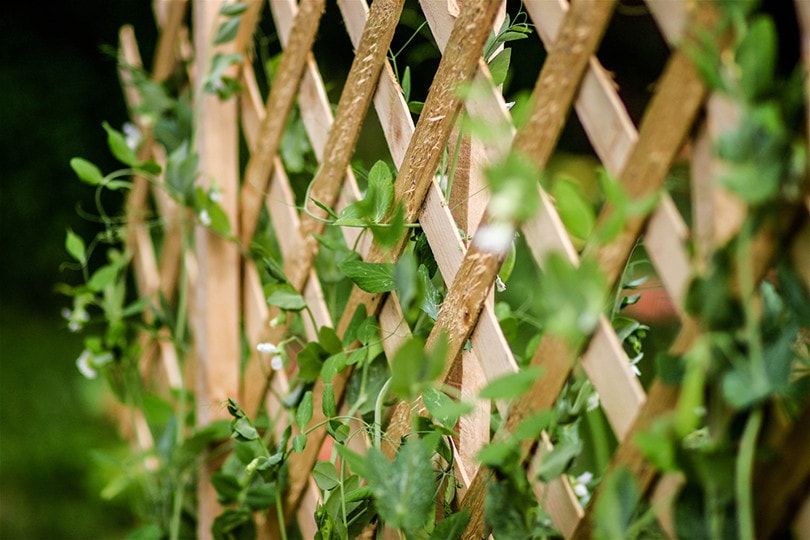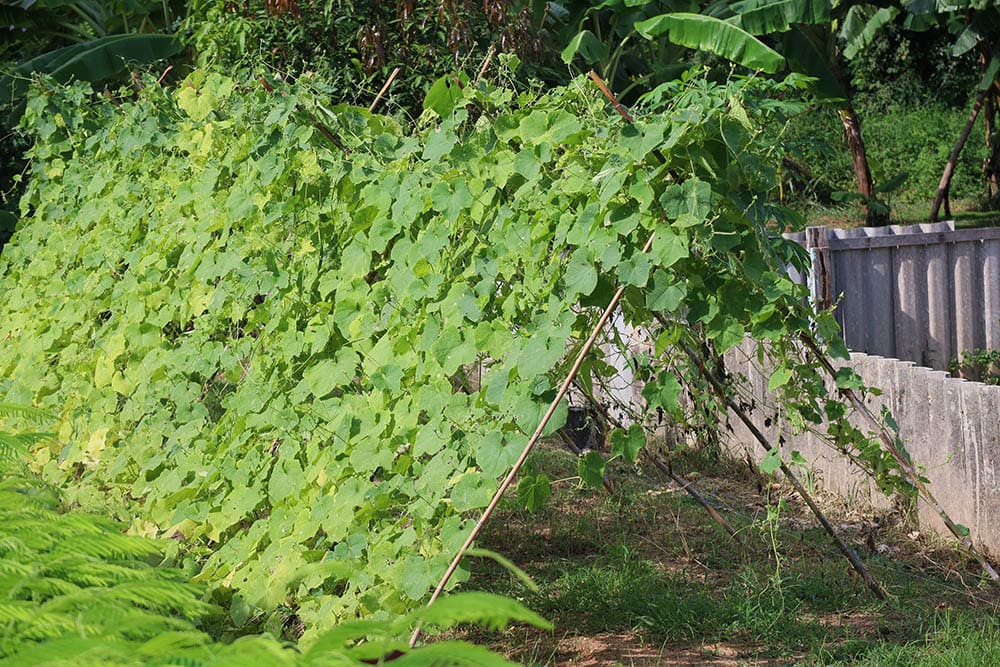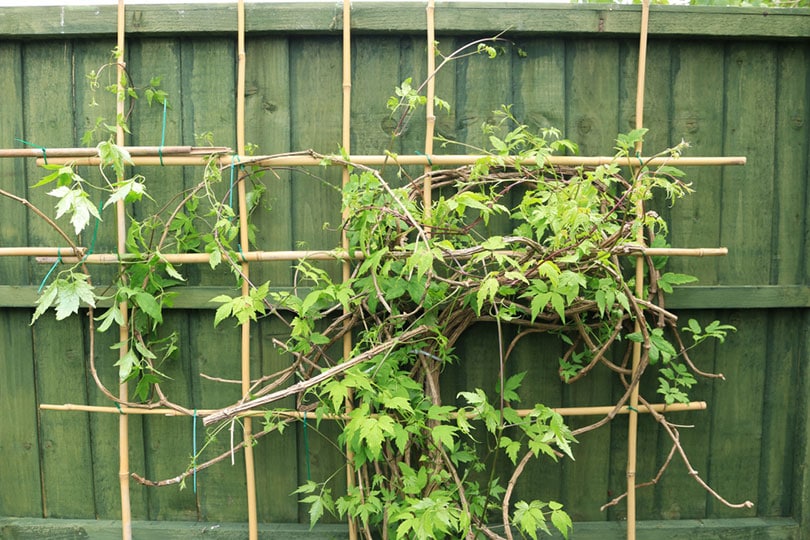Do Peas Need a Trellis? Tips for Growing Vertically
-
Pete Ortiz
- Last updated:

Peas are one of the most enjoyable garden veggies, whether you bring them inside for meals or snap them right off the vine for a mid-gardening snack. Popular pea varieties grow on vines, so using a trellis is an excellent way to keep them healthy and save space in the garden. If you want to bring these mouthwatering delights to your garden arrangement, we will discuss how to trellis peas so you can get your vertical gardening moving in the right direction.
 Do Peas Need a Trellis?
Do Peas Need a Trellis?
Peas are available in bush and climbing varieties. Climbing peas, which grow on vines, include garden peas, snow peas, and snap peas. Garden peas (aka English or sweet peas) are cooked out of the pod, while snow peas are eaten whole, either raw or cooked. Snap peas, also called sugar snap peas, are a cross between the two, sporting a crunchy, sweet pod that you can eat whole.
While bush peas are excellent for small gardens and do not need a trellis, there are several reasons why you need support for vining peas.
Peas grown on the ground can become difficult to contain and may start climbing over neighboring plants. They also become susceptible to disease, mildew, and rot when left sprawling on the ground, while everyday garden nuisances like slugs have easier access.
You avoid these potential problems when you grow peas up rather than out. Plus, growing peas on a trellis saves space and makes them easier to harvest.

What Is a Good Trellis for Peas?
Climbing peas can grow 6–8 feet tall, so it is crucial to use a trellis tall enough to get the best possible growth. When you’re looking for materials to use, the thickness of the support is an essential consideration.
Peas climb via shoots called tendrils, small leaflets about an inch long that wrap around objects to anchor them in place as they grow up. They need bars less than ¼ inch thick for the tendrils to cling onto, so a traditional wooden trellis is often not the best choice. Instead, a homemade net of twine, string, or mesh is ideal.
One of the simplest and most effective ways to build a trellis for climbing peas is to run chicken wire between two wooden supports. You can also use decorative obelisks, A-frames, or lean-tos. Check the information on your seed packet to ensure you use a structure tall and sturdy enough to handle your pea variety.
How to Trellis Peas
Peas are a cool-weather crop, meaning they flourish in the spring and fall. Plant them in early spring when the ground is thawed and consistently above 45°F. In warmer areas, you can plant in the late summer and have mature peas ready for harvest before the fall’s first frost.
Before you sow your seeds, insert your trellis in a garden plot that receives full sun. Sow seeds around or on either side of the support structure for the highest yield possible.
Growing your peas in a warm bed is ideal, so you may want to lay down plastic sheets or straw a few weeks before planting to warm the earth. To expedite germination, you can soak your seeds for 12 hours before planting them. As you plant your peas, you can also coat them in garden soil inoculant, a bacteria that helps peas grow stronger and replenish the soil with nitrogen.
Plant your peas in well-drained soil after amending it with a couple of inches of compost. Water them deeply, and keep the soil consistently moist as the seeds germinate.
Once the peas reach 6 inches in length, you can mulch around them to prevent weed growth and improve moisture retention.

Train Peas Up Your Trellis
As they grow, your pea vines will try to wander out rather than climb, and you will likely have to train them up the trellis. Gently tuck them into or around the structure to make the tendrils meet the wire so they will want to wrap around it. The vines are delicate, so you may need to support them with loose ties as they anchor themselves to the support.
After a few weeks, your plant will start producing, and you will be able to start enjoying fresh peas straight from the vine. Freeze or use your peas within a few hours after picking to preserve the flavor.
 Final Thoughts
Final Thoughts
When you grow peas on a trellis, you can bring delicious and nutritious veggies to the table and visual interest to the garden in one fell swoop. Peas thrive when you grow them on a trellis, as they can enjoy fewer threats and more nourishing sunshine, ensuring you get incredible yields that are fun and easy to harvest. Follow these tips on growing peas on a trellis, and see how peas can become a delightful bonus in your garden space.
Featured Image Credit: Rachel Maxwell, Shutterstock
Contents

 Do Peas Need a Trellis?
Do Peas Need a Trellis?